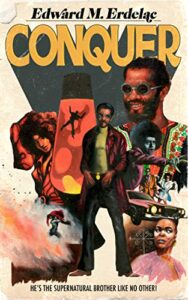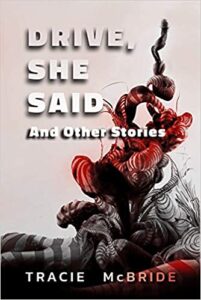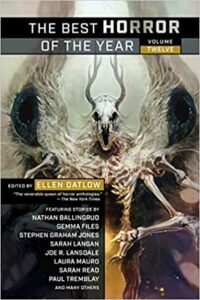( Bookshop.org | Amazon.com )
Conquer (John Conquer Series, Book 1) by Edward M. Erdelac
Independently published, 2020
ISBN: 9798579334848
Available : Paperback, Kindle edition
Harlem, 1976: an era of bad clothes, bad habits, and bad music. From this scene emerges John Conquer, private investigator, and the baddest brother around. How bad? Well, “didn’t he kung-fu Frankenstein off the marquee at the Apollo, and bust him to pieces with John Henry’s hammer? Didn’t he go fishin’ and catch the Creature from the Black Lagoon, and throw him back because he was too small! He played ball with Dr. J in Rucker Park, and let him win!” Conquer is a folk hero to Harlem, and his exploits have grown into legend among the locals. These are his stories.
Conquer consists of seven short stories, three were previously published in Occult Detective Quarterly in 2017. The stories are consistently entertaining, if a bit formulaic at the beginning of each story. They usually start with Detective Lou Lazzaroni of the NYPD being assigned a case. Lou realizes that the cases have a supernatural bent to them, and that’s where John Conquer steps in. Although he’s a standard PI, Conquer also has a deep knowledge of voodoo, hoodoo, and all kinds of occult stuff, as he was partially raised in Louisiana, America’s capital of pagan weirdness. It’s up to Conquer to solve the cases and save the day.
Author Erdelac has done a nice job writing a horror period piece: his portrayal of the late 1970s feels quite authentic, both in terms of setting (ox-blood leather coats, linoleum, lava lamps, etc.) and dialogue. The dialogue feels very accurate with its terminology and phrasing, and does a good job transporting the reader back to another time in American history. After Conquer is brought onto each case, the author shifts gears and shows a strong flair for creativity. Readers might assume that voodoo automatically means zombies, but only one story actually has the undead. Instead, Erdelac does a nice job cross-pollinating various African and Asian mythologies into the story. Examples include a Slip-Skin Hag (or ‘boo hag’), a Popobawa (a bat-wing creature) and a monster based on Dahomeyan beliefs that defies easy categorization. He did an excellent job researching these creatures for the book, but there are times when a little more explanation would have helped. Unless you’ve read Wade Davis’s The Serpent and the Rainbow, terms like bokor, vodoun, veve, and Papa Legba are likely to sail over the heads of most readers, sending them scrambling for Wikipedia.
The stories are fast with no wasted time. Conquer dives right into the action, destroying villains with often-creative methods, such as cigarettes laced with sage for exorcising demons, and a pocket-coating powder that renders pickpockets immobile and subject to Conquer’s commands. Part of the character’s appeal is that he doesn’t just blast away with his Colt Python, but often relies on his own magic methods to beat the baddies at their own game. Special mention must be made of a fantastic secondary character, in the form of the ghost of a dead pimp that haunts Conquer’s car, and speaks to him through the radio. This also allows Conquer to control the car through voice command, when the ghost agrees. It’s like a bizarre 1970s version of the television show Knight Rider, and the back and forth squabbling provides unexpected and welcome hilarity.
Overall, Conquer is a welcome horror novel throwback to another era. Let’s hope for more from Conquer and company in the future. Recommended.
Contains: violence, profanity
Reviewed by Murray Samuelson







Follow Us!